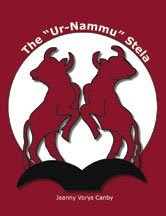Museum publishing fills a unique communication niche among researchers, collection and exhibit curators, and serious appreciators (aka intelligent lay readers and consumers) who interpret the human past. In my academic publishing career of seeing more than 2,000 titles (and many that got away) into print archaeologists and anthropologists have contributed nearly half—from now-classic works on Onondaga pottery to shell mound dwellers on Florida’s Gulf Coast to Potano and Taino and other first peoples in the Caribbean to Pannonia and points north in Eastern Europe to fire worshippers in the Caucasus and Paleolithic nomads in the steppes of Central Asia, sometimes as part of the press’s publishing program, sometimes in partnerships with museums like the Everson in Syracuse, the Florida Museum of Natural History and Harn Museum in Gainesville, Daytona Art Museum, Museum of Fine Arts in St. Petersburg (FL) and the Hermitage (St. Petersburg, Russia), the Tretyakov Gallery in Moscow, the National Gallery in Washington,, Mucsarnok in Budapest, and the Institute for Ancient Manuscripts in Tbilisi. The University Museum is part of a select group!
The University Museum’s richness of representation never fails to fascinate, and its publishing program, soldiering on since 1893, with Hilprecht’s first book on Ur, is an illustration of world-class values in microcosm, with 70 books produced since 2000.
I would like to share a little background on three recent University Museum authors, who are no longer with us but have enriched both our editorial experience and the Museum’s published contribution to international scholarship. Each was a fierce individual, no question of mis-identifying one with the other or anyone else, but they share traits of intense curiosity, perseverance, meticulous attention to detail, and the highest standards of scholarly inquiry.

Jes Canby, author of The Ur-Nammu Stela (cloth 2002, pbk 2006), spoke truth to power (the men in the British Museum, no less!) when she insisted on patiently piecing together the disparate chunks of a shattered memorial column discovered in Mesopotamia. She told me the stela deserved her decades of excruciating regard and attention. She read the narrative registers, tirelessly puzzled out the elements, large and small, posited possible reorderings and interpretations, and questioned continually, long after other experts had given up in exasperation. She had a cheerful, disarming, sometimes acerbic and scrappy manner that just wouldn’t quit. She was delighted in seeing her book sell out its hardcover edition—and because of reader demand be reissued in paperback (a first for a Museum Monograph), which continues to sell steadily, with its new cover of dancing red bulls taken directly from the stela. At several dinner visits during the year of her final illness, she was just as vibrantly interested in learning what customers were buying her book as any new author would be.

Bill Davenport, author of Santa Cruz Island Figure Sculpture (2005), didn’t live to see his book published, but we can only hope he would have been pleased with it. He had called on me when I joined the Museum in 2000 to say his ms. was nearly complete, and it was clear he had been on a major quest over many years, from the Solomon Islands through the major art repositories and collections of tribal objects in Copenhagen, Geneva, New Zealand, New York, Australia, Glasgow, and France and Germany. Bill died with manuscript variants on his computer, later teased out by the Museum’s Senior Archivist Alex Pezzati and especially Nancy Davenport. Jennifer Quick, our Senior Editor, and Judy Voelker, our graduate student worker, pieced together iterations of the manuscript with Nancy Davenport, who spent hundreds of hours checking, rechecking, and thinking about how she remembered Bill’s talking about how he wanted the story to be told. A professional photographer, Bill had amassed hundreds of ethnographic slides and prints of his travels in search of the ritual figures, and Nancy and Jennifer selected several dozen as photo journalistic essays we carried on an accompanying cd. Tracking the credits for all the images I learned of the warm regard rights holders felt for Bill over the years, and in spring 2005 I presented a copy of the book to one of his oldest collector friends in Geneva, who recounted some of the conversations he had had with Bill nearly 60 years before.
Keith DeVries, my first caller after I joined the Museum, despite his recent illness, also did not live to see his transformative book on recalibrated Gordion chronology completed, but he knew we will produce it as soon as we receive the finished manuscript from his colleagues who will carry it through. Keith—who also served on our editorial committee and provided some of the most cogent advice and steadfast support I’ve received from any member of the nearly two dozen committees I’ve worked with in multiple houses—had worked as an apprentice editor years ago at a New York academic press and so knew the protocols of scholarly publishing and the importance of peer review as well as the unique personalities and expectations of his fellow authors on Museum projects. He was intrepid and unswerving, tireless and understanding of all the challenges, eyes clearly on the prize of communicating well-considered assessments and interpretations, not just piles of undigested data, and incredibly patient with himself and his fellow authors. He had, with no irony, the long view of the Gordion site (along with a wry take on King Midas) and was one of its most faithful stewards.
These three University Museum authors, members of the larger scholarly community, set the highest of bars for intellectual and research integrity and made it a privilege to work with them.
No comments:
Post a Comment